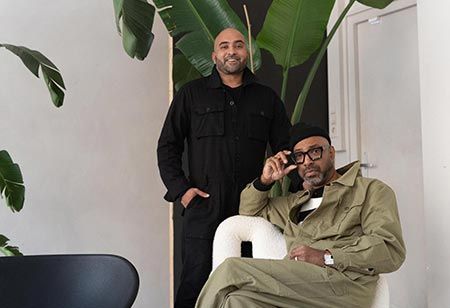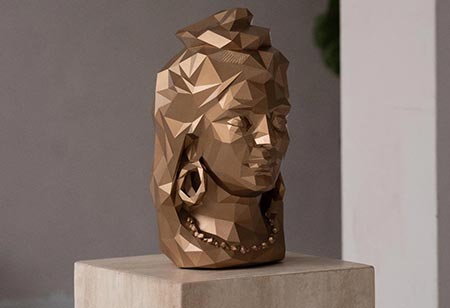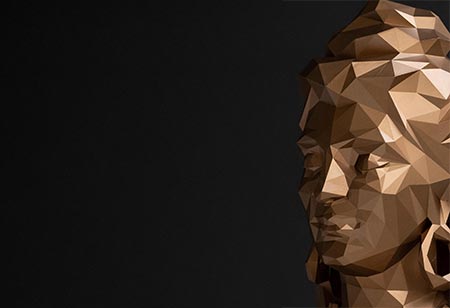
In an interaction with Homes India Magazine, Hans Goedoen and Jerrel Goedoen, Founders of Atelier Ajanta, shared how the premium home decor is today deeply personal, not just about owning something rare but owning something that is infused with your essence. Hans and Jerrel Goedoen, middle-aged cousins, developed a healthy aversion to craftsmanship, bringing the richness of traditional customs to the luxury decor. Make designs of invisible and incongruent with the sleek, modern interiors of contemporary homes.
Let’s delve into an insightful QnA session to unravel the nitty-gritty of luxury homes decor market:
1. How has the growth of e-commerce portals changed luxury decor shopping?
E-commerce has transformed the process of discovering luxury and, undoubtedly, purchasing it. Although tactile contact still is central to luxury furnishing, digital media has emerged as a compelling narrative platform through which brands can communicate the inspiration, handcraftsmanship, and emotion that goes into every single piece. For today's consumer, discovery is most likely to start online. E-commerce has allowed us to reach design-savvy individuals who might not enter a flagship store but are equally concerned with improving the home environment. It is no longer about looking through a catalogue; it's about accessing the universe of the brand through deep content, virtual consultations, and individually curated products that speak to personal taste.
Also Read: 5 Things to Consider before Buying a Water Tank
2. How is luxury home decor differentiated from premium or mid-market home decor products? 
Luxury is far more than price or quality; it's a state of mind, a faith. Although high-end design can provide longevity and appearance, luxury is eternally based on emotion, heritage, and spirit. It's in the attention to the craftsmanship, the use of immortal material, and respect for legacy methods. Each item at Atelier Ajanta is crafted with love, not mass-produced in lots, with the hope of one day being an heirloom family piece. Luxury is about making something not just beautiful, but significant and lasting.
3. What are the issues for luxury decor brands from the supply chain or material perspective?
For luxury residential furnishings companies such as the supply chain is human, not logistics. We depend on talented artisans, who in most cases employ enduring methods which are not substitutable or scalable. A disruption in even one element of this system, whether the availability of a certain wood, a natural dye for a specific season, or one master artisan, can hold production or affect the uniqueness of the piece. Further, specialty or sustainably produced material work tends to have longer lead times and are more expensive. Real sophistication is in shielding this delicate value chain and still being able to provide ageless craftsmanship to an enlightened clientele.
4. How is technology and innovation interwoven into luxury home decor?
Personalization and accuracy have never been simpler. From design customization using artificial intelligence to AR/VR visualization tools that enable clients to visualize a piece within their space, technology enhances the luxury shopping experience. Using advanced technology for archiving and storing complex designs so that heritage techniques can be reinterpreted for contemporary homes without compromising their essence.
Also Read: Are Modular Homes the New Future?
5. How do millennials and Gen Z define luxury home styling differently than previous generations?
The next generations are redefining the luxury playbook. They yearn for meaning, sustainability, and story. Luxury is not about vanity, but about authenticity. A piece created by a local craftsman has something to say on an emotional level that something branded does not. They want residences that will tell them and others who they are, what they stand for, and where they've been. That's why it's important to create products that communicate individuality and conscious living.
 6. What are your expectations for the development of luxury home interior design in tier-2 and tier-3 cities?
6. What are your expectations for the development of luxury home interior design in tier-2 and tier-3 cities?
The appetite for luxury is no longer confined to metros, it's evolving rapidly in India’s tier-2 and tier-3 cities. What we’re witnessing is not just growing affluence but growing aesthetic ambition. Clients in these regions are increasingly design-conscious and value-driven; they seek products that reflect refinement, cultural identity, and individuality. Witnessing a runaway increase in customer inquiries from these metros, fueled by internet visibility and desires for globalized lifestyles. The coming decade of luxury interiors growth will be shaped as much by these new markets as by the metros and brands that can meaningfully engage with these shoppers will define the future of luxury in India.
7. How will customer demand for personalization shape the future of this business?
Luxury today is deeply personal, not just about owning something rare but owning something that is infused with your essence. Your guests want to know their story told in the space where they reside, and that is where personalization can be a strength, that’s not simply providing customizations. Bring the guests into the process of creation. From choosing materials and finishes to co-designing motifs with personal meaning, every element becomes a collaborative effort. In the years to come, the luxury home design vision is in this space where intimacy and art meet, where every home has a story that's unique unto itself.
We use cookies to ensure you get the best experience on our website. Read more...
Copyright © 2025 HomesIndiaMagazine. All Rights Reserved.